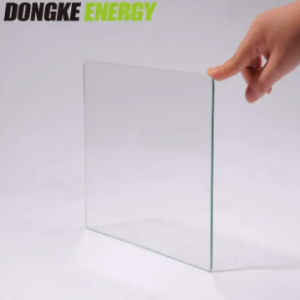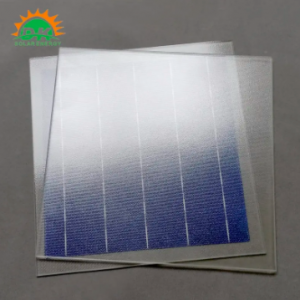In the pursuit of a sustainable and green future, solar energy has emerged as one of the most promising energy sources. Solar panels have become a common sight on rooftops and open fields, harnessing the sun's energy to provide electricity. However, recent advancements have taken solar technology to the next level with the introduction of solar glass, a game changer for the renewable energy industry.
Solar glass, as the name suggests, is glass specifically designed to harness the sun to generate electricity. Unlike conventional solar panels, which are often bulky and used separately from ordinary windows, solar glass combines the function of glass windows with solar power generation. This innovative technology enables residential and commercial buildings to harness solar energy while still maintaining a modern aesthetic.
One of the biggest advantages of solar glass is its ability to significantly reduce your carbon footprint. Conventional energy sources such as coal and natural gas emit greenhouse gases that contribute to global warming. In contrast, solar glass converts sunlight into electricity without producing any harmful emissions, making it an environmentally friendly alternative. By using solar glass, buildings can reduce their dependence on conventional energy sources and have a positive impact on the environment.
In addition to its environmental impact, solar glass has several other advantages. First, it helps reduce energy costs. As buildings harness solar power, there is less demand for grid power, reducing utility bills. This financial advantage is especially attractive to businesses that consume large amounts of energy, as solar glass can lead to substantial long-term savings.
Additionally, solar glass promotes energy independence. By generating their own electricity, buildings can reduce their dependence on external energy suppliers, thereby reducing the risk of blackouts and ensuring a more reliable energy supply. This self-sufficiency is especially valuable in remote areas where grid access may be limited.
The applications for solar glass are also diverse. It can be integrated into a variety of architectural designs and used in a variety of settings, from homes to skyscrapers. The flexibility of solar glass allows for creative designs while still harnessing solar energy efficiently.
However, despite the many advantages of solar glass, there are still challenges that need to be addressed. The cost of solar glass remains relatively high compared with conventional glass, which may deter some potential adopters. Additionally, the efficiency of solar glass is currently lower than that of traditional solar panels. We are doing research and development work to improve its performance and make it more cost-effective.
In conclusion, solar glass represents a major advance in renewable energy technology. With its ability to reduce carbon footprint, lower energy costs, promote energy independence, and its multifunctional applications, solar glass holds promise for a brighter, more sustainable future. As the technology continues to advance, it is hoped that the adoption of solar glass will become more widespread, creating a cleaner, greener planet for future generations.
Post time: Sep-08-2023


